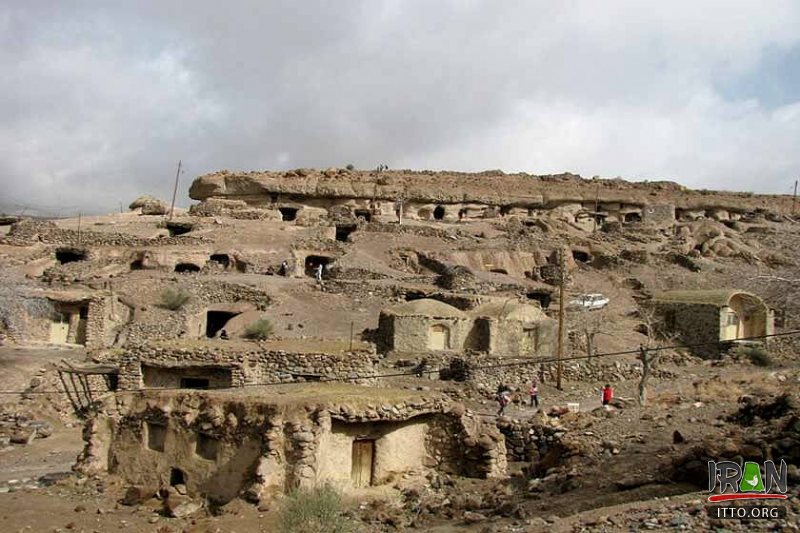The amount of rainfall is usually between 300mm and 500mm per annum and villagers use two traditional underground water systems, or qanats, to irrigate their lands.
There are many tiny oases in the ravines around the village, where hazel trees, vineyards, jujubes, almonds and other trees grow. Meymand has been continuously inhabited for 2,000 to 3,000 years, which makes it one of Iran's oldest surviving villages.
Archeological findings date the site back to 12,000 years ago or the Middle Stone Age. Excavations have yielded 10,000-year-old stone engravings and pieces of earthenware from 6,000 years ago. Meymand used to be a Zoroastrian settlement and one of its cave units, which is now a museum, was once a fire temple.
Some 15 circular stone rooms stand in an area of around 400 square meters in the village, where skeletal remains and various objects were found.
Archeologists have also found a piece of land three kilometers northeast of Maymand, which is filled with fragments of ossuaries decorated with rock art.
Locals believe the ossuaries date back to the Zoroastrian and Sassanid eras.
Rock art has also been found in Eshkaft grotto, a shallow cave with a large mouth which is located eight kilometers north of Meymand. It is said that visitors light and place candles beside the rock art. Meymand Village received UNESCO's 2005 Melina Mercouri International Prize for the Safeguarding and Management of Cultural Landscapes.
The award is given by the Greek government, in collaboration with the UNESCO, to reward outstanding examples of action to safeguard and enhance the world's major cultural landscapes.
Meymand is believed to be similar to the Kandovan Village in Iran's East Azarbaijan Province, Cappadocia in Turkey and the ancient city of Petra in Jordan.



